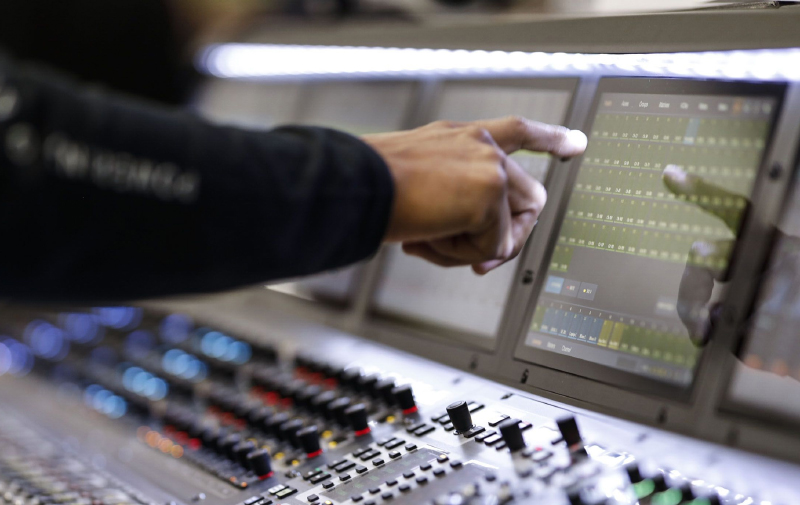
Once that’s all dialed in, the remaining four matrix channels are programmed for things I’m most likely to encounter on larger format shows (maybe additional PA system outs or communication channels). This way I know that the last four matrix outs are expendable and can be removed if I use the session on a smaller console.
Then I turn to routing and deploy the same process for buses. I decide how many buses are available on the smallest console and divide those between FX sends, monitor sends and other buses I might want to use (groups, external outboard sends, other routing capabilities). After programming those, I fill in the rest of the processing space with other things that might be useful and/or come in handy. The exact same logic then gets applied to the FX rack programming and DCA assignment.
Layout
Probably the most important consideration that can make or break a successful console template is consistently designing the fader assignment layout. Sometimes the limitations are such that you can’t really do much about it – maybe a console is designed in a way that keeps input channels strictly on one fader bay and the buses and DCAs on the other. Creating a consistent template will definitely be a struggle if you decide your template should always have 12 faders available in a fader bay, because all consoles aren’t built that way.
To me, it’s all about the layers. I try keeping a consistent layer layout across all consoles. That way I always know the drums are on the first layer, no matter the console or how many faders in a bay. I also know how the DCAs are assigned, again, regardless of console. It doesn’t matter how one lays out the faders and channels as long as that layout stays consistent through the entire line of consoles.
Shortcuts
Surely, we need to focus on the input channels now, right? Well, not yet. There’s still one more aspect that is – at least in my view – more important in a template session file, and that is programming shortcuts, macros, user defined keys; in other words, whatever it is that gets you around the console more quickly.
Take a look at the capabilities of the console and your workflow needs and combine them. Again, as with routing, the most crucial and most frequently used shortcuts get programmed in first, then adding others if the layout and console software make them possible. Try grouping shortcuts together in a consistent manner, so you know where they are and how to get to them easily.
Although having the same functionality and programmability options is unlikely to be exactly the same across all manufacturers (or sometimes even different series from the same manufacturer), most of the available functions are pretty standard so you should be able to get them quite close. Keep the template shortcuts simple and effective – you can always create something specific for a particular session down the road.
Input Channels
When creating templates for input channels, I try programming a blank slate if I’ve never used a console before. What I mean is getting the channels ready – routing in place, EQ points set (frequency only, no gain changes), compression engaged and initial parameters set (but not threshold, not yet). In other words, every processing point is instantiated but not actually affecting the channel.
If you’ve used a console previously and have a show file for reference, then channel libraries are a great tool for transferring channel settings between sessions. At this time, make sure your routing is correct and everything is going exactly where you want it to go. If using complex routing paths or third-party plugin processing, then also make sure latency issues are taken care of so that you can enjoy full benefits of that processing without any of the painful side effects those applications can cause.
Managing Templates
The final thing to consider is how to manage those templates. Once they’re created, the file name should include an indication that this is a template file, the console name, firmware/software details, and date of creation. This helps in avoiding mismatched sessions that aren’t compatible with the console. It also means they should be updated by creating new versions when new console firmware is released.
Last but not least, make sure a proper medium of transfer is available. A USB drive with the right capacity, formatting and file structure should be created and properly labeled so that you’re not guessing how to get a template file from the computer to the console.
Session templates are a great tool. They allow us to be efficient and fast, while the process of their creation also provides an always-needed opportunity to reflect on our workflow and come up with ways of making it even better.
